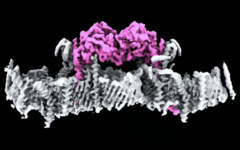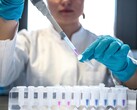Parkinson's disease is the fastest-growing neurodegenerative condition globally. Prevalence rates have been increasing rapidly over the past decades. In a brand-new advancement though, researchers at the Walter and Eliza Hall Institute (WEHI) have, for the first time, determined the structure of the human PINK1 protein bound to mitochondria. This discovery addresses a longstanding gap in understanding the molecular mechanisms underlying Parkinson's disease.
What is PINK1? It is essentially a protein encoded by the PARK6 gene (the gene that encodes the PINK1 (PTEN-induced putative kinase 1) protein - part of a group of genes that are associated with familial forms of Parkinson’s disease), and it plays a crucial role in maintaining mitochondrial health by identifying and marking damaged mitochondria for removal - a process which is key for cell survival. Mutations in PINK1 have been directly linked to Parkinson's disease, particularly early-onset forms.
The WEHI team's research elucidates how PINK1 functions in four distinct steps: sensing mitochondrial damage, attaching to the compromised mitochondria, tagging the protein ubiquitin, and then recruiting another protein, Parkin, to facilitate the recycling of the damaged mitochondria. For reference, the initial two steps of this sequence had not been visualized prior to this study.
Understanding the precise structure and activation mechanism of PINK1 opens new avenues for therapeutic interventions. By targeting PINK1 to enhance its activity or mimic its function, future drug development efforts may focus on slowing or halting the progression of Parkinson's disease. This is a promising glimmer of hope for those affected by this currently incurable condition - hopefully, this leads towards developing treatments that address the disease's root causes rather than merely managing its symptoms.
















